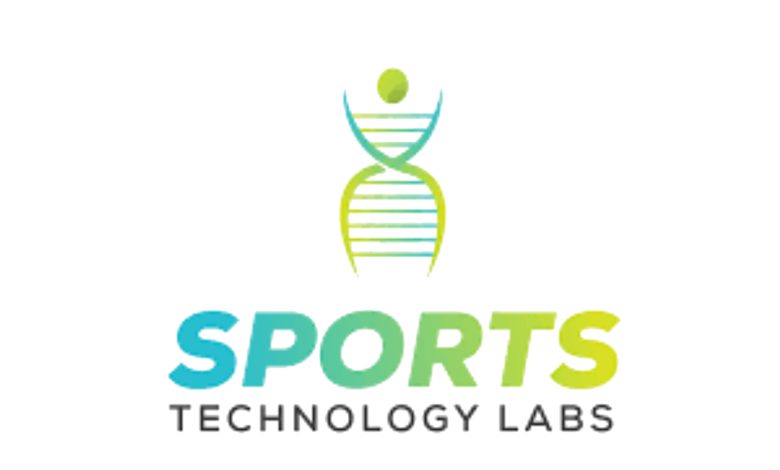Exploring the Future of Sports: Inside the Innovation of Sport Technology Labs 2024

In the dynamic world of sports, where every second, every movement, and every decision can make the difference between victory and defeat, innovation has emerged as a pivotal driving force. Athletes, coaches, and teams are constantly seeking ways to gain that extra edge that propels them to excellence. Enter the realm of Sport Technology Labs – the epicenters of cutting-edge advancements that are shaping the future of athletic performance.
In this article, we embark on a journey into the heart of sports innovation, peeling back the layers of Sport Technology Labs to uncover the transformative role they play in modern athletics. From analyzing intricate data patterns to developing revolutionary equipment and training methodologies, these labs have become the playgrounds where science and sports intersect, giving rise to a new era of possibilities.
Join us as we delve into the pivotal aspects that make Sport Technology Labs a driving force behind the evolution of sports. From exploring the groundbreaking technologies they incubate to understanding their impact on athlete development and the spectator experience, we will navigate the intricate web of innovation that these labs have spun. So, lace up your metaphorical shoes as we step into the future of sports, where innovation is the ultimate game-changer, and Sport Technology Labs are the powerhouses behind it all.
What are sports technologies?
Sports technologies encompass a diverse range of innovations designed to enhance athletic performance, training, and spectator experiences. These include wearable devices and sensors for real-time performance tracking, virtual reality and augmented reality for immersive training simulations, advanced equipment and materials for improved safety and performance, data analytics tools for insights into player performance and strategies, and technologies that enhance fan engagement and viewing.
Additionally, innovations in recovery, nutrition, and environmental monitoring contribute to athlete well-being and optimal training conditions. The continuous evolution of sports technologies is reshaping the landscape of sports by integrating science and innovation into every facet of the athlete’s journey.
Sports technologies encompass a dynamic array of cutting-edge tools, methodologies, and solutions that are revolutionizing the world of athletics. These innovations span a spectrum of applications, including performance enhancement, injury prevention, training optimization, and fan engagement. Wearable devices and sensors provide real-time data on athletes’ biometrics and movement patterns, enabling precise performance tracking and analysis.
Virtual reality and augmented reality technologies transport athletes into immersive training environments, fostering experiential learning and rapid skill development. The development of advanced sports equipment, from lightweight footwear to high-tech gear, maximizes athletes’ potential while ensuring their safety. Data analytics and sports science offer insights into player performance, enabling coaches to fine-tune strategies and training regimens.
Meanwhile, fan experiences are elevated through high-definition broadcasts, interactive apps, and personalized content. Moreover, technologies focusing on recovery, nutrition, and health monitoring empower athletes to maintain peak physical conditions. Ultimately, sports technologies converge at the crossroads of innovation and athleticism, reshaping how sports are played, watched, and experienced on a global scale.
How is technology used in sports?
Technology is used in sports across various domains to enhance performance, improve training methods, ensure safety, and enhance the overall fan experience. Here’s how technology is utilized:
- Performance Tracking and Analysis: Wearable devices and sensors collect real-time data on athletes’ movements, heart rate, and other vital metrics. This data helps coaches and athletes analyze performance, identify strengths and weaknesses, and make informed training adjustments.
- Biomechanics and Motion Analysis: Motion capture systems and 3D modeling software are used to study athletes’ movements in detail, helping to optimize techniques, prevent injuries, and enhance overall efficiency.
- Training Enhancement: Virtual reality (VR) and augmented reality (AR) technologies provide immersive training environments where athletes can practice in realistic scenarios, improving decision-making, reaction times, and tactical understanding.
- Equipment Innovation: Sports equipment is constantly evolving, incorporating advanced materials and designs to improve performance, safety, and comfort. Examples include lightweight and aerodynamic gear, specialized footwear, and protective equipment.
- Data Analytics and Sports Science: Data analysis tools process vast amounts of performance data to extract meaningful insights. Coaches and analysts use this information to fine-tune strategies, evaluate player progress, and optimize training programs.
- Injury Prevention and Rehabilitation: Technologies like cryotherapy, compression therapy, and physiotherapy aids in injury prevention and post-injury recovery, ensuring athletes stay in peak physical condition.
- Fan Engagement: High-definition broadcasting, instant replay, and interactive applications enhance the fan viewing experience. Augmented reality elements, such as virtual overlays during broadcasts, add a layer of interactivity for spectators.
- Nutrition and Health Monitoring: Wearable health devices and apps allow athletes to monitor their health and nutrition, ensuring they are in optimal condition for training and competition.
- Stadium Technology: Smart stadiums offer improved connectivity, digital displays, and interactive experiences for fans attending matches, enhancing the overall atmosphere.
- Environmental Monitoring and Safety: Technologies track environmental conditions such as temperature and humidity to ensure athlete safety and well-being during training and competitions.
- Performance Simulation and Analysis: Advanced simulation software models game scenarios, allowing coaches and athletes to strategize and evaluate different scenarios before actual competitions.
- Player Safety: Technologies like impact sensors in helmets and other protective gear help track and monitor potential head injuries, enabling swift intervention when necessary.
- Referee Assistance: Video assistant referee (VAR) technology allows referees to review key moments in a match to ensure fair decisions.
- Global Connectivity: Technology enables athletes, coaches, and fans to connect and share experiences globally, fostering a sense of community and collaboration.
These applications showcase the multifaceted ways in which technology has transformed sports, enhancing every aspect from athlete preparation to performance evaluation and fan engagement.
Where is sports technology labs located?
Sports technology labs can be found in various locations around the world, often associated with universities, research institutions, sports organizations, and private companies. Some of the most renowned and influential sports technology labs are situated in:
- Universities and Research Institutions: Many universities have dedicated research centers and labs focusing on sports technology. These labs conduct cutting-edge research, collaborate with athletes and sports organizations, and develop innovative solutions. Examples include the Loughborough University Sports Technology Institute (United Kingdom), MIT Sports Lab (USA), and the Australian Institute of Sport (Australia).
- Sports Organizations and Federations: Major sports organizations often establish their own technology labs to advance their sport and enhance athletes’ performance. For instance, the United States Olympic and Paralympic Committee’s (USOPC) Olympic Training Center in Colorado Springs is equipped with advanced sports technology facilities.
- Private Companies and Startups: Many private companies and startups specializing in sports technology have their own labs for research, development, and testing. These labs focus on areas like wearables, equipment innovation, data analysis, and fan engagement technologies.
- Sports Institutes and Training Centers: Some countries have national sports institutes or training centers that incorporate sports technology labs to provide cutting-edge training and support for athletes. These centers often collaborate with universities and research institutions.
- Sporting Goods Manufacturers: Companies that manufacture sports equipment and apparel may have research and innovation centers where they develop and test new products using the latest technologies.
- Innovation Hubs and Tech Clusters: Certain cities or regions have established themselves as technology and innovation hubs, and they may host sports technology labs as part of their broader innovation ecosystems.
- Stadiums and Sporting Venues: Some modern stadiums and sporting venues include integrated technology labs for research, development, and testing of technologies aimed at enhancing the fan experience and optimizing athlete performance.
- Collaborative Initiatives: Collaborative efforts between different entities, such as partnerships between universities, companies, and sports organizations, can lead to the establishment of sports technology labs.
Keep in mind that the location of sports technology labs is not limited to these categories, and they can exist in a wide range of settings depending on the focus of the lab and the partnerships involved. As the field of sports technology continues to grow, new labs may emerge in different regions to contribute to the advancement of sports science and innovation.
Is sports Technology Labs SARMs legit?
It’s important to clarify that Sports Technology Labs (STL) and Selective Androgen Receptor Modulators (SARMs) are two distinct topics.
- Sports Technology Labs (STL): STL refers to facilities or centers that focus on researching and developing sports-related technologies, equipment, and methodologies to enhance athlete performance, training, and overall sports experiences. These labs work on a wide range of innovations, including wearables, data analytics, biomechanics, virtual reality, and more. Whether STLs are “legit” or not depends on their reputation, affiliations, partnerships, and the quality of work they produce.
- Selective Androgen Receptor Modulators (SARMs): SARMs are a class of compounds that affect the androgen receptors in the body, often used for their potential to increase muscle mass and strength. While SARMs have gained attention for their potential in bodybuilding and athletics, they are not approved by regulatory bodies like the FDA for human consumption, and their long-term safety and potential side effects are still being studied.
If you’re asking whether a specific entity named “Sports Technology Labs” is connected to SARMs, I would advise you to conduct thorough research on that entity, including checking their official website, affiliations, reviews, and any news or information available about their activities. Additionally, when considering the use of SARMs or any supplement, it’s crucial to consult with medical professionals and adhere to legal and ethical guidelines regarding their usage. Always prioritize your health and well-being when exploring any performance-enhancing substances or technologies.
How Register With Sport Technology Labs
- Research and Identify Labs: Begin by researching and identifying the sports technology labs that align with your interests and expertise. Look for labs associated with universities, research institutions, sports organizations, or private companies.
- Visit the Lab’s Website: Once you’ve identified a lab of interest, visit their official website. Often, labs will have information about collaborations, partnerships, and how to get involved.
- Check for Registration Information: Look for any dedicated sections on their website related to registration, partnerships, or collaboration. They might have specific instructions or forms for interested individuals or entities.
- Contact Information: If you don’t find registration information directly on the website, look for contact information. They might have an email address, phone number, or contact form. Use this information to initiate contact.
- Craft an Inquiry Email: Write a well-structured email expressing your interest in registering or collaborating with the lab. Clearly state your background, skills, and why you are interested in working with them. Be professional and specific in your communication.
- Highlight Your Expertise: In your email, highlight any relevant skills, experience, or research that make you a valuable potential collaborator. Mention any projects, publications, or work that demonstrates your expertise.
- Explain Your Intentions: Clearly explain your intentions for collaboration. Are you looking to contribute to ongoing research, offer your expertise, or propose a joint project? Make sure your intentions are clear and aligned with the lab’s objectives.
- Attach a Resume or Portfolio: Attach your resume, CV, or portfolio if applicable. This will give the lab a more comprehensive view of your background and skills.
- Professional Tone and Clarity: Ensure your email is written professionally, is clear in its purpose, and free of errors. Your initial email is your first impression, so make it count.
- Wait for Response: After sending your inquiry email, be patient and wait for a response. Labs might take some time to review inquiries and respond.
- Follow Up: If you don’t receive a response within a reasonable time frame (a couple of weeks), you can consider sending a follow-up email to express your continued interest.
- Phone Call or Meeting: If the lab expresses interest in your collaboration, you might be invited for a phone call or meeting to discuss details further.
Remember that the process can vary widely depending on the specific lab, organization, or entity. Be prepared to tailor your approach based on their specific requirements or instructions. Always maintain a professional and respectful tone in your communication.
You May Also Like: Webflow SEO Tool: Strategies for Boosting Your Site Performance In Simple Ways 2023
Best Sport Technology Labs
Determining the “best” sports technology lab can be subjective and depends on various factors such as research focus, partnerships, innovation, and the impact of their work. Additionally, the field of sports technology is rapidly evolving, so what might be considered the best today could change in the future. However, here are a few renowned sports technology labs that are often recognized for their contributions:
- MIT Sports Lab (Massachusetts Institute of Technology, USA): MIT’s Sports Lab focuses on cutting-edge research in sports analytics, biomechanics, and innovation. They work on projects ranging from athlete performance optimization to injury prevention.
- Loughborough University Sports Technology Institute (United Kingdom): Loughborough’s institute is known for its comprehensive research in various sports science disciplines, including biomechanics, equipment testing, and human performance analysis.
- Australian Institute of Sport (Australia): The AIS has been a pioneer in sports science and technology. They focus on athlete performance, recovery, and technology-driven innovations in various sports.
- Stanford Sports Biomechanics Lab (Stanford University, USA): Stanford’s lab is known for its biomechanics research, which helps optimize techniques and reduce the risk of injuries for athletes.
- Aspetar Orthopaedic and Sports Medicine Hospital (Qatar): Aspetar is a prominent institution for sports medicine and has research facilities dedicated to sports science, sports medicine, and rehabilitation.
- Barcelona Sports Technology Research Group (Spain): Based at the Polytechnic University of Catalonia, this group focuses on developing sports technology innovations and conducts research in collaboration with various sports organizations.
- Fraunhofer Institute for Integrated Circuits IIS (Germany): This institute conducts research in sports technology, including wearable devices, sensor systems, and data analytics for optimizing athlete performance.
- Harvard Sports Analytics Collective (Harvard University, USA): This student-led organization focuses on sports analytics and data-driven insights to enhance strategies in various sports.
- KTH Royal Institute of Technology – Sports Engineering Lab (Sweden): KTH’s lab specializes in sports engineering, including biomechanics, equipment design, and materials science for sports equipment.
- Center for Sport Science and Human Performance (Portugal): This center at the University of Lisbon conducts research in sports science, biomechanics, and technology-driven innovations to enhance athletic performance.
These are just a few examples, and there are many other exceptional sports technology labs around the world. The “best” lab for you would depend on your specific interests, whether you’re an athlete, researcher, or enthusiast, and what areas of sports technology you’re most interested in exploring.
Conclusion
In the ever-evolving landscape of sports, technology has emerged as a driving force that shapes the way athletes train, compete, and captivate audiences. The symbiotic relationship between sports and technology has birthed a new era of innovation, ushering in unprecedented advancements that extend far beyond the boundaries of the playing field. From wearable devices that monitor vital metrics in real time to virtual reality simulations that transport athletes into game scenarios, every facet of sports has been touched by the transformative power of technology.
Sport Technology Labs stand at the forefront of this revolution, acting as incubators for creativity, research, and ingenuity. These labs are the nexus where scientists, engineers, athletes, and coaches converge to push the boundaries of possibility. They are the birthplaces of cutting-edge equipment, data-driven insights, and training methodologies that propel athletes to new heights of excellence. As the sporting arena becomes increasingly intertwined with the digital realm, Sport Technology Labs offer a glimpse into the future, where the fusion of science and athleticism gives rise to unparalleled achievements.
The journey through the realm of sports technology has revealed a world where performance is optimized, safety is prioritized, and engagement is enhanced. Yet, even as technology opens doors to uncharted territories, it also reminds us of the essence of sport – the human spirit of competition, camaraderie, and the pursuit of greatness. While the tools and methodologies may evolve, the heart of sports remains unchanged.
In the end, the marriage of sports and technology is not merely a partnership; it’s a synergy that encapsulates the spirit of progress. As we look ahead, it’s certain that Sport Technology Labs will continue to be the crucibles of innovation, shaping a future where athletes soar to heights once thought impossible, and the world witnesses the unfolding of athletic feats that transcend the boundaries of yesterday’s achievements.





